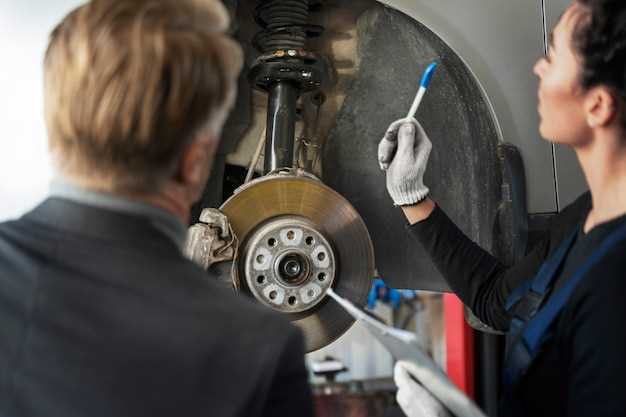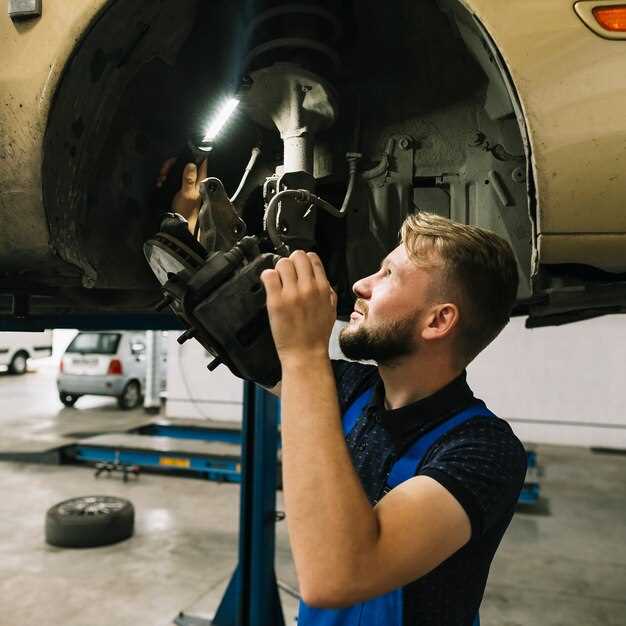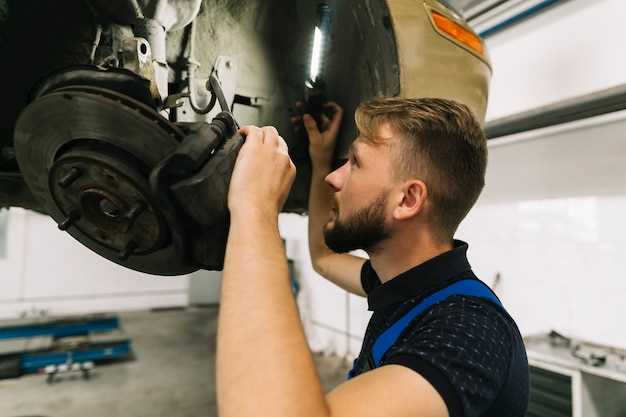
If you are looking to enhance your vehicle’s performance and safety, upgrading to a big brake kit is one of the most effective modifications you can make. A big brake kit not only improves stopping power but also enhances the overall appearance of your wheels, making your ride look more aggressive. This step-by-step guide will walk you through the process of installing a big brake kit, ensuring that you can confidently handle the upgrade yourself.
Installing a big brake kit requires careful planning, the right tools, and a basic understanding of your vehicle’s braking system. Throughout this guide, we will cover everything from selecting the right kit for your vehicle to the final adjustments needed for optimal performance. Whether you are a seasoned car enthusiast or a beginner looking to delve into DIY upgrades, this guide will provide you with clear, concise instructions to successfully complete your big brake kit installation.
With the right preparations, installing a big brake kit can be a rewarding project that yields impressive results. Not only will you notice a significant improvement in your stopping distance, but you’ll also gain greater confidence when driving at high speeds or during intense conditions. Let’s dive in and explore the essentials for a successful big brake kit installation.
Choosing the Right Big Brake Kit for Your Vehicle
When considering an upgrade for your vehicle’s braking system, selecting the right big brake kit is crucial for enhancing performance and ensuring safety. A big brake kit typically includes larger rotors, calipers, and high-performance brake pads, designed to increase stopping power and reduce brake fade during high-stress situations.
First, assess your vehicle’s compatibility with various big brake kits. Check the manufacturer specifications to confirm that the selected kit fits your model without requiring extensive modifications. Some kits are specifically engineered for certain vehicles, providing an optimal balance between functionality and aesthetics.
Next, consider your driving style and needs. If you frequently drive in high-performance scenarios or track conditions, a big brake kit with upgraded components is essential. Look for kits that incorporate features such as multi-piston calipers and slotted or drilled rotors, as these enhancements improve heat dissipation and pedal feel.
Additionally, take into account the type of brake pads included in the kit. High-friction materials are ideal for performance-oriented driving, while other compounds may be more suited for everyday use. Investigate user reviews and product descriptions to find a kit that offers the right balance for your specific application.
Lastly, factor in your budget. While investing in a quality big brake kit can greatly improve your vehicle’s performance, there are various price points available. Research multiple options and consider the long-term benefits of each kit, ensuring that you choose one that delivers the best value for your needs.
Tools and Equipment Needed for Installation

Upgrading your vehicle’s brake system with a big brake kit requires specific tools and equipment to ensure a smooth and efficient installation process. Below is a detailed list of what you will need.
| Tool/Equipment | Purpose |
|---|---|
| Jack and Jack Stands | To lift and secure the vehicle safely while working on the braking system. |
| Wrench Set | For removing and tightening bolts on the brake assembly. |
| Sockets and Ratchet | To expedite the removal of larger bolts and nuts found on the brake components. |
| Torque Wrench | To ensure that bolts are tightened to the manufacturer’s specifications, preventing over-tightening or under-tightening. |
| Brake Cleaner | To clean the brake components and remove any grease or dust before installation. |
| Brake Fluid | To refill the brake system after installation, ensuring proper hydraulic function. |
| Pliers | To help with clip removal and any stubborn components during the brake upgrade. |
| Flathead and Phillips Screwdrivers | For removing screws and unclipping various components in the brake assembly. |
| Rubber Mallet | To gently persuade brake components into place without causing damage. |
| Safety Goggles and Gloves | To protect your eyes and hands while handling brake parts and working in potentially hazardous conditions. |
Having the right tools and equipment for your big brake upgrade will not only facilitate a smooth installation but also ensure that the upgrade functions effectively for your vehicle’s performance and safety.
Preparing Your Vehicle for Brake Kit Upgrade
Before embarking on the installation of a big brake kit, it is crucial to prepare your vehicle adequately. Proper preparation ensures a smooth installation process and optimal performance of the new brake system. Follow these steps to prepare your vehicle for the brake kit upgrade:
-
Gather Required Tools and Materials:
Before starting, ensure you have the necessary tools and materials, including:
- Socket set
- Wrench set
- Brake fluid
- Brake cleaner
- Torque wrench
- Jack and jack stands
- Safety goggles and gloves
-
Choose a Safe Work Environment:
Select a flat, dry surface to perform the upgrade. Ensure the area is well-lit and free of obstructions.
-
Lift the Vehicle:
Use a jack to lift the vehicle and secure it with jack stands. Ensure the vehicle is stable before proceeding.
-
Remove the Wheels:
Loosen the lug nuts and remove the wheels to gain access to the brake components. Keep the lug nuts in a safe place for reinstallation.
-
Inspect Existing Brake Components:
Before installing the new kit, inspect the current brake components for wear or damage. Replace any worn parts if necessary.
-
Check Brake Fluid Level:
Inspect the brake fluid reservoir and ensure it is at the appropriate level. Top off if necessary to avoid contamination during the upgrade.
-
Gather Brake Kit Components:
Unpack the new big brake kit and verify that all components are included as per the manufacturer’s documentation. This typically includes:
- Brake calipers
- Brake rotors
- Brake pads
- Mounting hardware
By following these steps, you will ensure that your vehicle is adequately prepared for the brake kit upgrade, leading to a successful installation and improved braking performance.
Step-by-Step Installation Process of the Big Brake Kit
Installing a big brake kit is an effective way to upgrade your vehicle’s braking performance. Follow these detailed steps to ensure a successful installation.
Step 1: Gather Your Tools and Materials
Before starting, collect all necessary tools, including a socket set, wrenches, a brake bleeder kit, and torque specifications for your specific big brake kit. Ensure you have the new brake components ready, such as calipers, rotors, and pads.
Step 2: Lift the Vehicle
Using a vehicle lift or jack stands, elevate the vehicle to a safe working height. Remove the wheels to access the brake components. Ensure the car is secure before proceeding.
Step 3: Remove the Old Brake Components
Begin by removing the brake caliper and hanging it securely, avoiding stress on the brake line. Next, detach the rotor from the hub by removing any securing bolts and sliding it off. Take care of existing components, as they need to be compared with new components for proper fitment.
Step 4: Install the New Rotors
Place the new big rotors onto the hub. Ensure they are properly aligned and seated. If applicable, secure them with the provided bolts according to the manufacturer’s torque specifications.
Step 5: Attach New Calipers
Position the new calipers over the rotors and align them with the mounting points on the vehicle. Install the bolts and tighten them to the recommended specifications. Double-check alignment to ensure optimal performance.
Step 6: Install Brake Pads
Insert the new brake pads into the caliper bracket. Ensure they are correctly positioned for even wear and effective braking. If your kit includes shims or clips, install them as per the instructions.
Step 7: Bleed the Brake Lines
To ensure all air is removed from the system, use a brake bleeder kit to bleed the new calipers. Start with the caliper farthest from the brake master cylinder and work your way closer. Check for any leaks during this process.
Step 8: Reinstall Wheels
Carefully put the wheels back onto the hubs. Tighten the lug nuts to the manufacturer’s specified torque. Lower the vehicle back to the ground and remove the jack stands or lift.
Step 9: Test the Brake System
Before driving, pump the brake pedal several times to ensure the brake pads engage with the rotors and the system feels firm. Check for any unusual sounds or leaks.
Step 10: Take a Test Drive
Finally, take your vehicle for a short test drive at low speeds to ensure proper functionality. Gradually increase speed while testing the brakes to verify they effectively stop the vehicle without issues.
Testing and Adjusting Your New Brake System
After successfully installing your big brake kit, it’s crucial to test and adjust the system to ensure optimal performance. Begin by checking for any leaks in the brake lines or at the caliper connections. Inspect the installation for tightness and proper alignment, as misalignment can lead to uneven wear or decreased braking efficiency.
Next, perform a series of brake tests in a safe area. Start with gentle stops to bed in the brake pads. This process helps establish a layer of material on the rotors, enhancing the kit’s performance. Gradually increase your braking force while observing how the system responds. Pay attention to the pedal feel and any noise that may arise during braking.
Monitor the brake temperature after several stops using an infrared thermometer. Consistent high temperatures can indicate issues such as insufficient airflow or incorrect pad choice. Adjust the brake setup as necessary by considering upgrades like better cooling options or different pads tailored for your driving style.
Finally, evaluate the brake balance, especially if your vehicle has been modified. Adjust the brake bias if the rear or front brakes are overpowering each other. This can often be corrected by installing proportioning valves or changing pad compounds to improve overall handling and safety. Regular checks will ensure your big brake kit remains effective and reliable.
Maintenance Tips for Big Brake Kits

Regular maintenance is crucial for ensuring the longevity and performance of your big brake kit. Here are some essential tips to keep your braking system in top condition.
Firstly, inspect the brake pads frequently. Check for signs of wear, such as uneven thickness or cracking. Replace pads when they reach the manufacturer’s recommended limit to maintain optimal braking performance.
Next, monitor the brake fluid level and quality. Top off the fluid as needed, and replace it according to the vehicle manufacturer’s guidelines. Contaminated fluid can lead to decreased braking efficiency and potential damage to the brake system.
In addition, pay attention to the rotors. Look for warping, scoring, or any irregular surface conditions that may affect braking performance. If any issues are noticed, resurfacing or replacing the rotors may be necessary.
Also, consider cleaning the brake components regularly. Dust, dirt, and brake debris can accumulate and affect performance. Use appropriate cleaning agents to remove contaminants from the calipers, pads, and rotors.
Furthermore, check the calipers for leaks or fluid runoff. Leaking brake fluid can lead to loss of braking power, so ensure seals are intact and in good condition. If leaks are detected, replace or rebuild the calipers as needed.
Finally, ensure that all mounting hardware is secure. Loose components can lead to improper alignment and decrease braking efficiency. Regularly inspect and tighten bolts and screws to prevent movement during operation.
By following these maintenance tips, you can maximize the performance and lifespan of your big brake kit, ensuring safety and reliability on the road.
